
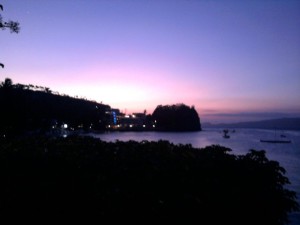 The similarities between Puerto Galera and Boracay are not limited to aesthetics and the sun/sand/sea gratification they offer. The rise of these prime Philippine tourist destinations is practically the same, with Puerto Galera at the heels of Boracay. Both are paradise discovered, developed and overdeveloped, at the cost of the environment and the local communities – what made these places paradisial in the first place.
The similarities between Puerto Galera and Boracay are not limited to aesthetics and the sun/sand/sea gratification they offer. The rise of these prime Philippine tourist destinations is practically the same, with Puerto Galera at the heels of Boracay. Both are paradise discovered, developed and overdeveloped, at the cost of the environment and the local communities – what made these places paradisial in the first place.
The Climate Change Factor
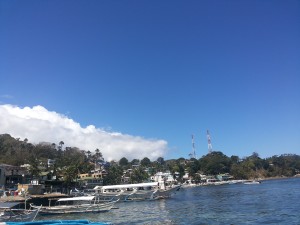 Things are bound to change when climate changed. Like many marine hotspots, today’s freakish climate affects Boracay and Puerto Galera. The rising water temperature causes corals to bleach, and affects other lifeforms, such as krill. This then results in an imbalance, and changes coral reef landscapes. It also creates monster storms; one of which was Bagyong Caloy (international name: Typhoon Chanthu) in 2010. Caloy destroyed the coral reefs of the Sabang, Puerto Galera beaches: Sabang, Small La Laguna, and Big La Laguna. These were some of the major draws of the area – a reason why countless dive shops do business along Sabang’s beaches.
Things are bound to change when climate changed. Like many marine hotspots, today’s freakish climate affects Boracay and Puerto Galera. The rising water temperature causes corals to bleach, and affects other lifeforms, such as krill. This then results in an imbalance, and changes coral reef landscapes. It also creates monster storms; one of which was Bagyong Caloy (international name: Typhoon Chanthu) in 2010. Caloy destroyed the coral reefs of the Sabang, Puerto Galera beaches: Sabang, Small La Laguna, and Big La Laguna. These were some of the major draws of the area – a reason why countless dive shops do business along Sabang’s beaches.
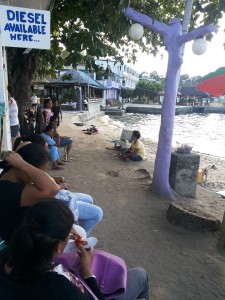
The Human Factor
Like Boracay, Puerto Galera is a tourist mecca. It counts more than a million visitors yearly. And not surprisingly, much of its decline is human by-product.
This is not to say that tourism is necessarily a bad thing for the region. It is the source of livelihood for many locals in Puerto Galera. Whether employed formally by tourist establishments or working as boatman, street hawker etc., people are dependent on the consistent flow of visitors.
And travelers will continue to come. Puerto Galera is the only Philippine bay listed in the so-called “Club of the Most Beautiful Bays of the World.” Amazing dive sites are 5 to 10 minutes away from Sabang. The Verde Island Passage – declared in 2006 as the “Center of the Center of Marine Shorefish Biodiversity” by a team of marine conservationists and one of the best dive spots in the world – is just 30 minutes away. White Beach has a pristine stretch of fine white sand beach and a lively seaside nightlife.
This is where the impasse lies. Tourist traffic creates waste, particularly wastewater, which has to be handled by an effective sewerage collection and treatment system. The coastal waters of Puerto Galera are already subject to uncontrolled sewage discharges. Several areas have been highlighted by the Philippine Department of Environment and Natural Resources (DENR) as being contaminated with fecal coliform.
As tourism booms, the health of the natural environment declines, which will eventually affect the Verde Island Passage and other nearby dive sites, the Puerto Galera tourism industry, and the health and livelihood of local communities.
Reflecting Boracay
Boracay faced similar environmental issues in the past two decades. In 1997, the DENR went public with reports about Boracay’s coliform contamination. Tourist arrivals dropped by almost 10 percent in the following years. This sent everyone – even the national government – scrambling for a fix, albeit temporary.
It took more than a decade, in 2012, before Boracay could implement a better solution through the establishment of the Boracay Island Water Corporation (BIWC). BIWC is a Tourism Infrastructure and Enterprise Zone Authority (TIEZA) and Manila Water joint venture. The group is responsible for establishing a wastewater treatment plant, which collects and treats wastewater before this is released into the sea.
As for Boracay’s reef, it is the beneficiary of a Php 60 million artificial reef project called Code Blue, which was launched in 2012. It was touted as the “most extensive artificial reef project in the Philippines” and involved the Sangkalikasan Cooperative, Philippine Chamber of Commerce and Industry (PCCI)-Boracay, Cooperative Development Authority, and the Malay municipal government, among others. The following year, Globe Telecom’s corporate social responsibility arm joined the project and even brought divers from Manila to help install reefbuds.
Code Blue will install 5,000 reefbuds across a 2 kilometer stretch, parallel to Boracay’s beachfront. The project is patterned after similar artificial reef projects in Anilao, Batangas, Puerto Galera’s neighbor dive destination. It looks forward to the next 10 years, when a projected 30% of the Boracay’s coral reef will have been recovered.
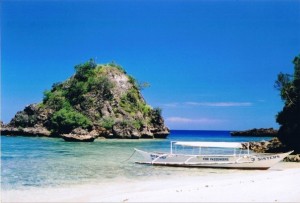
Galera Initiatives Undone
Puerto Galera needs a similar artificial reef project, especially after Typhoon Caloy. The reefs along the Sabang beaches, and even those of the Coral Garden, a popular snorkeling and dive spot along the Manila Channel, Puerto Galera, barely resemble their former glorious selves.
Antonio Arago, four-time Galera counselor and former environment committee head, said that this was acknowledged by several commercial establishments. Businesses relied on healthy reefs in order to keep their client traffic at a profitable rate. According to Arago, artificial reefs were already created and were ready for installation, with Sabang business owners footing the bill. The project hit a snag with the municipal government. Supposedly, having artificial reefs will send the wrong message: that the area’s natural reefs were no longer worth a visit.
It is a waste and a disappointment if such narrative is true, especially when one looks at neighboring Anilao. Anilao is experiencing a tourism revival of sorts, partly because of efforts to reinforce its natural reefs with artificial ones.
Puerto Galera’s upgraded sewerage system is another story. There was local clamor for a better way of handling wastewater. The tourism boom in the past decade strained a sewerage system that was not built for the volume it needed to handle. Uncontrolled sewage leakage into the sea was prevalent.
By 2006, Sustainable Coastal Tourism Asia (SCOTIA) and the Partnerships in the Environmental Management for the Seas of East Asia (PEMSEA) were brought in to help the municipal government plan, campaign, fund and implement the Sabang Sewerage Collection and Treatment System. The project would establish upgraded sewage management systems in the zones of Sabang, White Beach and the Puerto Galera town proper. Like the Boracay wastewater treatment plant, it would collect and treat wastewater before releasing it into the sea.
Unlike the Boracay treatment plant, it didn’t have the financial backing of established public service companies. Instead, it relied on Puerto Galera’s meager (by Boracay standard) municipal funds, and funds collected from stakeholders and tourists.
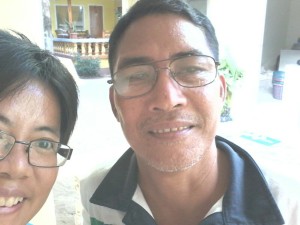
According to Arago, per year, the municipal government only made 10% of the total project cost. It was necessary to increase collections from travelers. Sabang representatives were willing to peg Environmental Usage Fee (EUF) at Php 120 per entry. White Beach owners – perhaps thinking of local tourists who made up majority of their visitors – disagreed.
This deadlock not only represented a halt to the sewerage upgrade. It also put the municipal government’s political will to the test. The divisiveness of the EUF can make officials less willing to push for what’s necessary, else they ruffle reelection feathers.
***
This leaves one with a Puerto Galera that has yet to address its urgent environmental issues. While Boracay is forging ahead, Galera’s clock is ticking. In the end, it is not about keeping apace. It is about snapping out of inaction in order to save the marine environment and sustain coastal communities dependent on it.
References:
Public-Private Partnership in Sustainable Tourism: The Case of Puerto Galera by the Partnerships in the Environmental Management for the Seas of East Asia (PEMSEA)
How Boracay treats its wastewater to improve water quality for tourists by Alexander Villafania, http://loqal.ph/
Boracay’s Road to Ruin by Nereo C. Lujan, Philippine Center for Investigative Journalism
5,000 ‘reefbuds’ to repair Boracay’s coral reef system by Nestor P. Burgos Jr., Inquirer Visayas
Reefbuds to revive Boracay’s coral reefs, The Philippine Star
